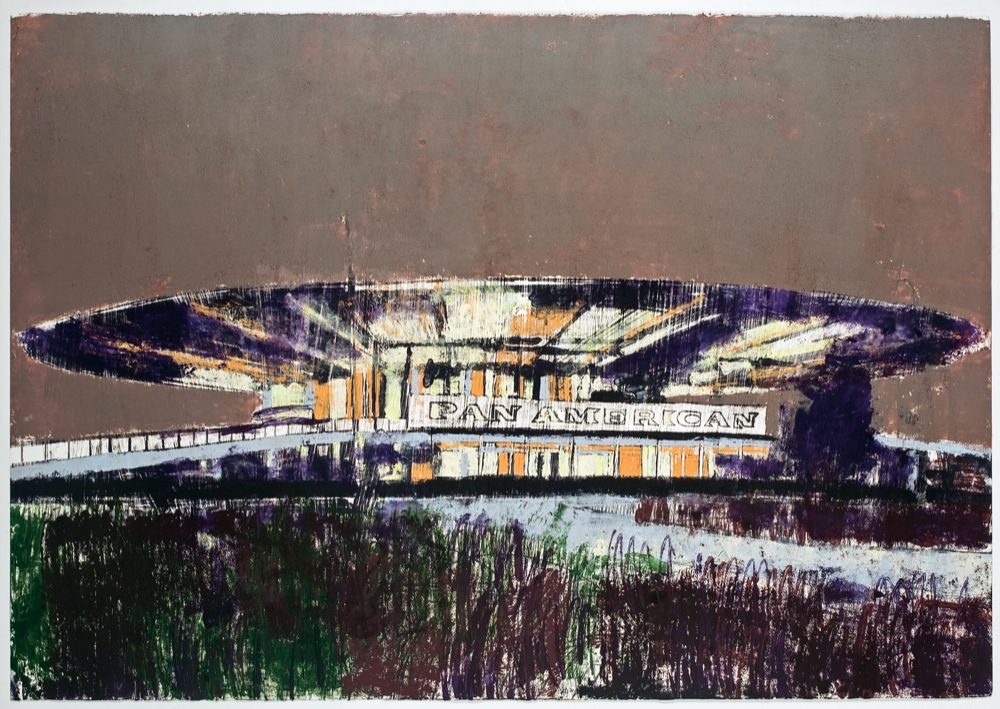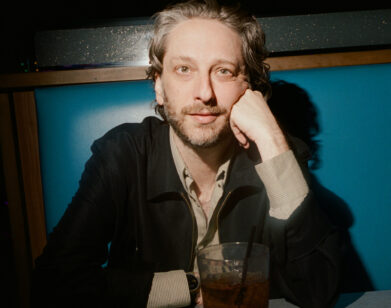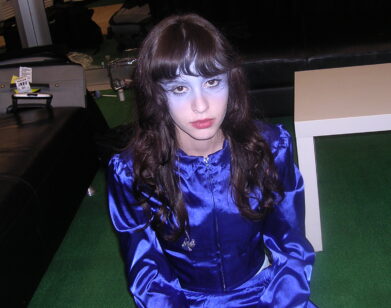Enoc Pérez

In Enoc Pérez’s paintings of modernist buildings, rum bottles, and provocative nudes, the intensity of his attraction to his subject is so evident that one becomes complicit in his nostalgia trip almost immediately. Last year, in an inspired convergence of art and geography, the 42-year-old’s series of paintings of the Lever House in New York City appeared in the lobby of that very building. But when he’s not showing in architectural landmarks, Pérez’s work can be found in New York at Mitchell-Innes & Nash and in London at Faggionato Fine Art. The paintings in his current series, based on Eero Saarinen’s TWA terminal at New York’s JFK Airport, are his largest yet.
DAVID COGGINS: What is your relationship to the buildings that you paint?
ENOC PÉREZ: It’s a matter of attraction-attraction to the building, to the object, to what I’m going to paint. In terms of architecture, I see buildings as ready-mades, in the Duchampian sense. I see them as metaphors, and I respond to metaphors almost physically-I know whether a building is something I want to use pretty much immediately.
DC: How is that different from the nudes you paint?
EP: The paintings of buildings are portraits, too.
DC: Are they like portraits in the sense that you get to know them more after you’ve spent time painting them?
EP: I try to get a likeness of them, so there’s definitely an element of portraiture. There should always be a bearing or a relationship to the object or person being portrayed, and I try to be loyal to the architecture. Part of the selection process is the love for the building.
DC: You build an image with a physical history. Your painting process is not unlike printmaking. You don’t actually touch the canvas with a brush.
A lot of painters paint to question the medium, which might be perfect for them, but I’m one of those who really believes in painting.Enoc Pérez
EP: The reason I came up with this unique process is, when I moved to New York in 1986, I thought, If I’m making paintings in this city I would like the work to have a relationship with the masters of this city-somehow it has to make sense within the tradition of the city. For my money, the work of Andy Warhol is hard to ignore, and he used the process of silkscreening in his paintings. I thought that my work should have a relationship to printmaking, and so through trial and error I found a way that suits my needs.
DC: For somebody who likes Andy Warhol, there is a nostalgic quality to your work. You were born in Puerto Rico-how do you feel about nostalgia?
EP: I’ve been here 22 years. After a while you become a New Yorker. I love Puerto Rico, and we have a lot of hotels there that are modernist buildings, and that’s probably where the love of this specific type of architecture comes from. In a way, these architects really believed in the idea of utopia. There’s a true sense of believing in these buildings, and if you look at contemporary architecture, that’s not as much the case. The fact that they’re from a different era makes them nostalgic. I love painting, and I believe in painting, and I share that with these architects who believed in utopia. A lot of painters paint to question the medium, which might be perfect for them, but I’m one of those who really believes in painting.







